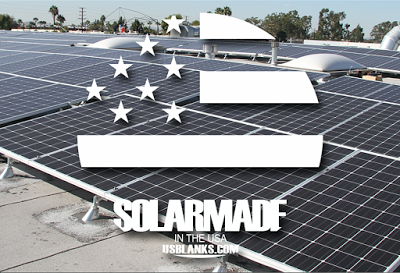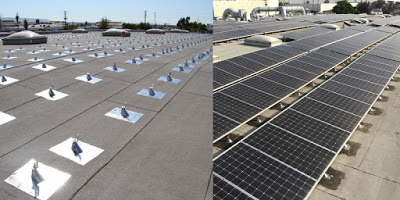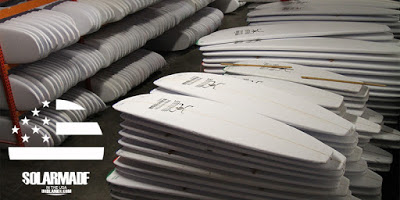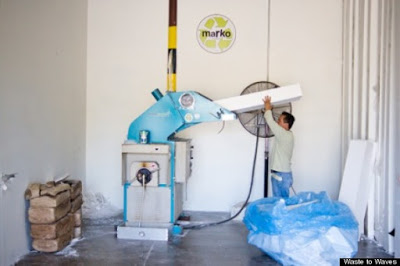 Dec
13
Dec
13
~ A Green Christmas ~
- December 13, 2016
- 0 Comment(s)
Full disclosure, I wrote this article with the general intent
of making some connection between the holiday season’s association with the
color green and the virtues of green (as in
‘bio-friendly’) surfboard building practices. I was going to do a little
research to figure out the significance of that color to the holidays, probably
crack a few puns to relate the two things, and then cleverly shift to my main
point of environmentally conscious craftsmanship. It was going to be a jolly
ol’ time. Turns out holiday green is only a thing because of some weird
nonsensical stuff the Romans and Egyptians used to do with plants in the
winter… or something like that. After
a thirty-minute tangent Googling some generally useless information, it seemed best
to just skip that whole song and dance and get right to it.
So anyways, we all know green is
good. Surfing is inextricably connected to the world’s system of interconnected
ecosystems, and therefore protection and preservation will always be in our
best interest. Here at Foam E- Z we laud the efforts of suppliers,
manufacturers, and individuals who strive to reduce the impact us board
builders unavoidably leave on the environment. It’s our hope that by highlighting
these efforts, we can help inspire others to follow suit and find more ways to
improve our methods.
Though
these are by no means the only companies we support who are making a positive
impact, here are two companies that have recently been making a difference that
we are stoked on, as well as a brief guide on ways you can reduce your own
individual board building footprint.
– Joey Estrada
of making some connection between the holiday season’s association with the
color green and the virtues of green (as in
‘bio-friendly’) surfboard building practices. I was going to do a little
research to figure out the significance of that color to the holidays, probably
crack a few puns to relate the two things, and then cleverly shift to my main
point of environmentally conscious craftsmanship. It was going to be a jolly
ol’ time. Turns out holiday green is only a thing because of some weird
nonsensical stuff the Romans and Egyptians used to do with plants in the
winter… or something like that. After
a thirty-minute tangent Googling some generally useless information, it seemed best
to just skip that whole song and dance and get right to it.
good. Surfing is inextricably connected to the world’s system of interconnected
ecosystems, and therefore protection and preservation will always be in our
best interest. Here at Foam E- Z we laud the efforts of suppliers,
manufacturers, and individuals who strive to reduce the impact us board
builders unavoidably leave on the environment. It’s our hope that by highlighting
these efforts, we can help inspire others to follow suit and find more ways to
improve our methods.
these are by no means the only companies we support who are making a positive
impact, here are two companies that have recently been making a difference that
we are stoked on, as well as a brief guide on ways you can reduce your own
individual board building footprint.
– Joey Estrada
U.S. Blanks…Now 100% Solar Made
Recently U.S. Blanks has
taken up the charge by converting their Los Angeles based factory to run
entirely on solar power. This is the latest move from the surfboard blank
mainstay that has made a name for itself by proudly producing their diverse
line of 90+ different blank models entirely within the United States, while
upholding California’s strict environmental guidelines.
With the installation
of their new grid of 680 solar panels to their factory this past month, they
will not only be able to run their entire production on the suns energy, they
will be producing enough to contribute some back to the grid!
“Carbon footprint reduction
has influenced every decision made at US Blanks. With our 680 solar panels, our
goal is to generate more energy than what is required to fuel our factory and
to contribute that energy back to the grid.”
–Jeff Holtby, US Blanks
vvv
Entropy
Resins… The Amazing Sustainable Bio-Epoxy
Entropy Resins
aren’t exactly new to the game of the eco-friendly glassing materials. They
have spent the better part of the last few years creating and refining
alternative epoxy resins that have increased bio content for a reduced carbon
footprint. To understand a little more about their resin and what sets them
apart, we did a little interview some of its creators here.
FeZ: How, in general, is your resin
made that differs from other epoxies to make it more bio friendly?
Entropy: “So
what we do is replace as much petroleum as possible in base raw materials with
bio content without sacrificing performance of the resin. We do this by
integrating the bio-content in to epoxy molecules that are chemically identical
to traditional epoxy. However the bio-content is significant and measurable.
what we do is replace as much petroleum as possible in base raw materials with
bio content without sacrificing performance of the resin. We do this by
integrating the bio-content in to epoxy molecules that are chemically identical
to traditional epoxy. However the bio-content is significant and measurable.
This bio content is all plant matter, mostly pine saps, oils, etc.,
that are sourced from the waste stream of the food and chemicals processing
industry. We also derive
waste from bio-fuels production that are processed into our resins. Essentially
we are up-cycling other industries’ waste.
that are sourced from the waste stream of the food and chemicals processing
industry. We also derive
waste from bio-fuels production that are processed into our resins. Essentially
we are up-cycling other industries’ waste.
This is important
because it minimizes the energy, water, and chemicals used to make our resin vs
100% petroleum based chemistries, again, replacing as much petroleum as
possible with this food & fuel waste bio content. Other than that,
the basic properties and methods of creating our resin are about the same (all
resin manufacturers have their own techniques, formulas, etc which make them
all unique in one way or another).
because it minimizes the energy, water, and chemicals used to make our resin vs
100% petroleum based chemistries, again, replacing as much petroleum as
possible with this food & fuel waste bio content. Other than that,
the basic properties and methods of creating our resin are about the same (all
resin manufacturers have their own techniques, formulas, etc which make them
all unique in one way or another).
It just so happens
that over the last 8 years, we have perfected our formulas and methods, and now
have a leading resin compared any other brand out there. There is a reason why Channel Islands make
all their epoxy boards with Entropy, as well as all Firewire/Slater Designs,
Mayhems, Roberts, Pyzels, Maurice Coles, and an endless number of the
“smaller guys” (usually higher quality builds) are moving over to use
our resin exclusively…taking away the sustainability, the resin is just out
performing everything else on the market!
that over the last 8 years, we have perfected our formulas and methods, and now
have a leading resin compared any other brand out there. There is a reason why Channel Islands make
all their epoxy boards with Entropy, as well as all Firewire/Slater Designs,
Mayhems, Roberts, Pyzels, Maurice Coles, and an endless number of the
“smaller guys” (usually higher quality builds) are moving over to use
our resin exclusively…taking away the sustainability, the resin is just out
performing everything else on the market!
Being transparent
about our bio-content and how we verify and measure the impact of our
bio-content is the key differentiator for us (i.e. not just claiming ‘bio’ but
measuring the impact on the environment of that material). We’ve also listened
to the market, and continuously worked to give them clearer and faster curing
resins with great workability and cure times… all while balancing our
bio-content and verification.”
about our bio-content and how we verify and measure the impact of our
bio-content is the key differentiator for us (i.e. not just claiming ‘bio’ but
measuring the impact on the environment of that material). We’ve also listened
to the market, and continuously worked to give them clearer and faster curing
resins with great workability and cure times… all while balancing our
bio-content and verification.”
FeZ: What does the percentage of
‘bio-content’ mean?
Entropy: So with
regards to the percentage of Bio content. Our products have varying
degrees of “bio content”…the ONE sits in at around 38-40%. The
latest version of ONE was actually reduced to 30% bio-carbon content this year.
We did that to give our users a much clearer, and better performing version. It’s
still USDA Bio-preferred certified though, and the highest bio-content
available resin today.
regards to the percentage of Bio content. Our products have varying
degrees of “bio content”…the ONE sits in at around 38-40%. The
latest version of ONE was actually reduced to 30% bio-carbon content this year.
We did that to give our users a much clearer, and better performing version. It’s
still USDA Bio-preferred certified though, and the highest bio-content
available resin today.
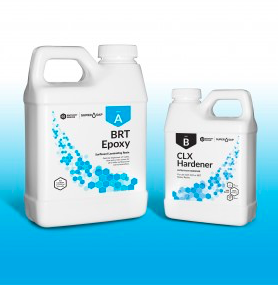 |
| BRT/CLX System |
The CLR and BRT come in around
21%…now the important thing to note is that this number reflects the mixed
content (Resin and Hardener cured). There are a lot of other companies
out there that will throw wild number like 50 %…They may not be lying, but
they are likely talking about just one component…either the A side or B
side.
21%…now the important thing to note is that this number reflects the mixed
content (Resin and Hardener cured). There are a lot of other companies
out there that will throw wild number like 50 %…They may not be lying, but
they are likely talking about just one component…either the A side or B
side.
Also, we only report ‘bio-carbon’ content (i.e. carbon atoms
only). Some other companies claim a total ‘bio-mass’ number (carbon, nitrogen,
oxygen, hydrogen atoms, etc.)… This is an important distinction, because there
is no way to measure and verify total ‘bio-mass’ today. You can only measure
bio-carbon content, (per below) and the USDA only recognizes bio-carbon
measurements. Therefore, that’s what we go by. Customers need to be careful
about everyone throwing around bio-content percentages, and should take the
time to understand this distinction. They should look for testing as done by
ASTM D6866.
only). Some other companies claim a total ‘bio-mass’ number (carbon, nitrogen,
oxygen, hydrogen atoms, etc.)… This is an important distinction, because there
is no way to measure and verify total ‘bio-mass’ today. You can only measure
bio-carbon content, (per below) and the USDA only recognizes bio-carbon
measurements. Therefore, that’s what we go by. Customers need to be careful
about everyone throwing around bio-content percentages, and should take the
time to understand this distinction. They should look for testing as done by
ASTM D6866.
Once you combine the two, that percentage will go
down. In order to get USDA certified (our ONE system) you have to
have a minimum of 25% in the finished product…so that means A and B fully
cured.
down. In order to get USDA certified (our ONE system) you have to
have a minimum of 25% in the finished product…so that means A and B fully
cured.
However, Bio content is only half the story with our resin.
Bio content doesn’t really mean anything if you can’t do it
right. You have to focus more on the overall carbon footprint of a
product, bio or not. We have gone so far as to have a 3rd part
organization called SCS Global, do a Life Cycle Analysis on our products and
company as a whole. They did an extensive audit of our company, from
where we source the raw materials, how we manufacture, every truck, boat,
plane, bottle, etc. to show our over all carbon footprint. Compared with
standard epoxy resin systems, we have 40% less of a carbon footprint and
continuing to improve on that daily. And this isn’t something you can
just pick up and do…If another resin manufacturer was going to switch to
implementing bio content, chances are their overall carbon footprint will go up
as they have to change their whole manufacturing. We have spent the last
8 years refining and dialing ours in.
right. You have to focus more on the overall carbon footprint of a
product, bio or not. We have gone so far as to have a 3rd part
organization called SCS Global, do a Life Cycle Analysis on our products and
company as a whole. They did an extensive audit of our company, from
where we source the raw materials, how we manufacture, every truck, boat,
plane, bottle, etc. to show our over all carbon footprint. Compared with
standard epoxy resin systems, we have 40% less of a carbon footprint and
continuing to improve on that daily. And this isn’t something you can
just pick up and do…If another resin manufacturer was going to switch to
implementing bio content, chances are their overall carbon footprint will go up
as they have to change their whole manufacturing. We have spent the last
8 years refining and dialing ours in.
FeZ: What
are some of the long and short term benefits (from an environmental standpoint)
of using your bio-resin over more standard resins?
Entropy: As stated
above, the manufacturing of our resin and the way we run our business is much
more sustainable compared to other resin companies. We also are a 1% for
the Planet member, and probably the only chemical/ resin company to do that. 1%
of our sales go to non-profits working to reduce climate change, and wildlife
and land preservation. Lastly, we only sell bio-based resins. It’s not just a
product line for us, it’s the entire mission and purpose of our company.”
above, the manufacturing of our resin and the way we run our business is much
more sustainable compared to other resin companies. We also are a 1% for
the Planet member, and probably the only chemical/ resin company to do that. 1%
of our sales go to non-profits working to reduce climate change, and wildlife
and land preservation. Lastly, we only sell bio-based resins. It’s not just a
product line for us, it’s the entire mission and purpose of our company.”
~
Now It’s Time For You To Do Your Part ~
Ah, the “three R’s.”
So thoughtful. So relevant. So cheesy.
Cheesy though they may be, they make for one hell of a catchy pneumonic device
to make sure you never forget how simple it is to do your part. Jack Johnson
may sing a song about it to elementary school kids, but the same rules still
apply to you as an adult, and doubly so if you’re making surfboards. Let’s be
honest, it is inherently a dirty
process. It’s your duty to heed a few simple steps, with some help from the
“three r’s” to make it less so… here’s how.
Reduce:
– Measure the
material you need at any given time carefully. From choosing the correct blank
size, cutting only the amount of cloth you need, to measuring out the right
amount of resin, less waste is more.
material you need at any given time carefully. From choosing the correct blank
size, cutting only the amount of cloth you need, to measuring out the right
amount of resin, less waste is more.
Reuse:
– Plenty of cutaway
materials throughout the shaping/glassing process can be repurposed in one way
or another. Extra foam/dust after shaping? Save it for ding repairs. Extra
cloth after cutting it to size? Save it for ding repairs. Extra material from
your stringers or hardened resin? Use it for leash loops or tail blocks!
materials throughout the shaping/glassing process can be repurposed in one way
or another. Extra foam/dust after shaping? Save it for ding repairs. Extra
cloth after cutting it to size? Save it for ding repairs. Extra material from
your stringers or hardened resin? Use it for leash loops or tail blocks!
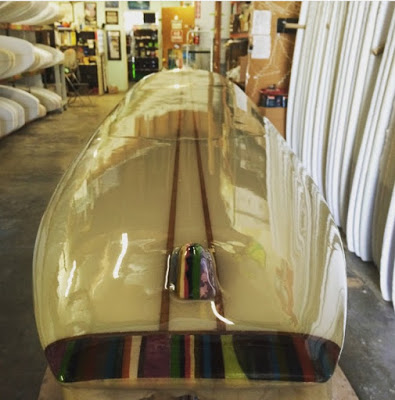 |
| Recycled Resin Tailblock and Leash Loop by Pierson Shapes |
– Set up an acetone
station with two to three buckets of acetone (was materials from dirtiest
bucket to cleanest) in order to preserve tools such as gloves, spreaders, and
even acetone for repeated use.
station with two to three buckets of acetone (was materials from dirtiest
bucket to cleanest) in order to preserve tools such as gloves, spreaders, and
even acetone for repeated use.
 |
| Acetone Station |
– Keep a designated
set of shaping/glassing clothes and shoes that you don’t mind thrashing. The
longer you can make ‘em last, the less waste you create.
set of shaping/glassing clothes and shoes that you don’t mind thrashing. The
longer you can make ‘em last, the less waste you create.
Recycle:
– Many companies like ReRip or Marko Foam will
take extra foam or broken boards to recycle into their own blanks or other
purposes. This is a great way to ensure portions of your dream board can become
someone else’s dream board.
take extra foam or broken boards to recycle into their own blanks or other
purposes. This is a great way to ensure portions of your dream board can become
someone else’s dream board.

